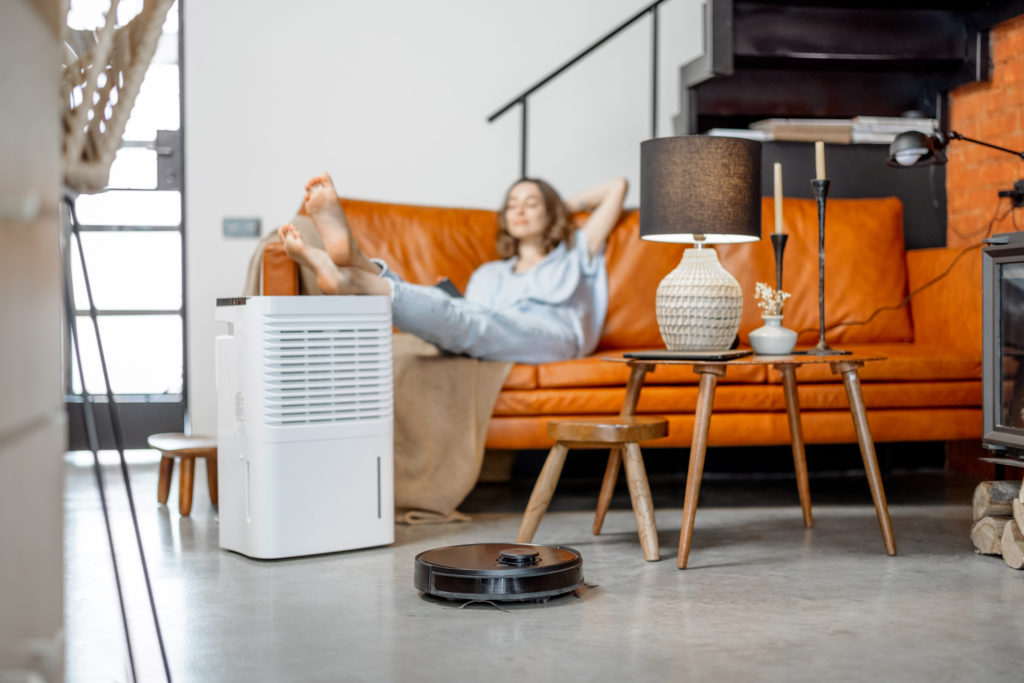Oftentimes, homeowners don’t take indoor air quality into consideration, but the truth is it is crucial to make sure that everyone in your household is breathing in the cleanest air possible inside your home. Particle pollution refers to solid and liquid droplets that are in the air that can be dangerous for anyone of any age. Some particles, such as dust, dirt, and smoke, are large enough to be seen with the naked eye, but what about those particles that can’t be spotted? That’s where a whole-home air purifier can be in a homeowner’s best interest.
What a Whole-Home Air Purifier Can Do

If you’re worried about your indoor air quality, a whole-home air purifier may be the perfect solution to particle pollution. After all, there are particles in the air that are small enough to slip through standard HVAC filters. In a whole-home air purifier, however, special filters help to effectively trap even the smallest of airborne particles. Experts have found that even the most advanced air purifiers can eliminate up to 99.98 percent of contaminants in a given household. That means cleaner air, less dust in your home, and improved health for you and your loved ones.
Traditional air purifiers use high-efficiency filters to target particulate matter, but models are now focused on doing what they can in your household to eliminate the potential spread of COVID-19 amidst this pandemic. This approach to clean air is extremely effective at neutralizing both particulate matter and harmful airborne pathogens. These oxidizing molecules can even seek out and destroy organic growth on surfaces. This helps to cut off particulates at the source.
The Dangers of Particulate Matter

Depending on the cubic feet of your home and the care for your indoor space, a home air purifier can be just what your entire home needs for air purification. You may not be able to see the particulate matter, but it’s truly a jumble of tiny particles that can remain suspended in the air. Particle pollution comes from many sources, but there are common sources like dust, dander, combustion byproducts, liquid droplets, and heavy metals. These particles are especially concerning because they can be inhaled during respiration, causing significant potential health complications.
Pet dander and dust mites in the home can cause allergy and breathing problems, and that’s why addressing the irritants has led owners to look for solutions to address indoor air concerns for their whole house. In the past, some homeowners have opted for just having an ionic air purifier in their bedrooms or in high-traffic areas of their house, such as the living room. The truth is these smaller particles can linger in any room of a house or apartment.
Ways To Prevent Particle Pollution

While a home air purifier can be the greatest defense against harmful pollution, there are also simple steps that any homeowner can take to improve the indoor environment. One of the easiest steps to take is to ventilate through open windows and doors to get any must or odors out of your home after cooking or cleaning to improve indoor air quality. Proper airflow from your home’s HVAC system is important as well. Regularly cleaning air filters or replacing them will make sure that dust isn’t clogging your ductwork and finding its way throughout the house.
Tobacco smoke can linger in a home, creating an overwhelming health risk associated with significant respiratory disorders, even emphysema. Regular cleaning habits can take down harmful particulates, especially those associated with animal dander and dirty filters. A dehumidifier, in conjunction with an air purifier, can also prevent high humidity levels that create a breeding ground for mold and dangerous spores. However, the safest approach for your family members and yourself is to have an air purifier taking care of your household.

